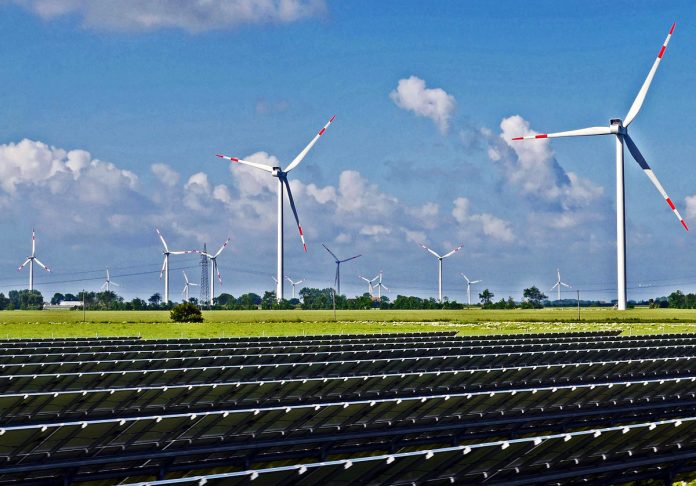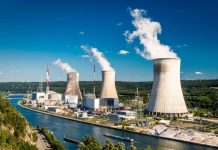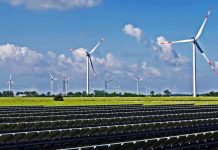This article is written by Saswata Tewari from the University of Petroleum and Energy Studies Dehradun. This article discusses how policies and changes in Indian energy legislation were developed and changed following independence.
Table of Contents
Introduction
Adrian Bradbook had explained the term “energy law” as the allocation of rights and duties concerning the exploitation of all energy resources between individuals, between individuals and the government, between governments, and between states. His definition was broad, in the sense that it resonated with many different types of energy laws, rather than just one. To say it simply, there is no single body of law known as energy law, and the subject of energy law is attached to the various types of energy sources powering up our lives.
It can be also defined as the regulation of the various stakeholders’ energy-related rights and duties over energy sources throughout the energy life cycle. While analyzing energy law and its drivers, this definition of energy law distinguishes itself from resource law and allows for consideration of the full energy value chain. For all energy sources, this approach encompasses all aspects of the energy life cycle, from extraction to production to operation to consumption and waste management.
How Energy Law came into existence
Energy is the lifeblood of modern economies, propelling both industrial and individual consumption. It has been powering hundreds of different industries and is one of the most prominent industries of the twentieth century.
When discussing petroleum, the European Union’s Court of Justice stated that “due to the exceptional importance of petroleum products, energy sources in the modern economy are of utmost importance for the existence of not only the country’s economy but also its essential public services and even the survival of its inhabitants.” Given the fundamental importance of petroleum products and energy in general, as well as the economic value that this industry and its activities represent, it’s no surprise that energy law and international energy law have grown in popularity as academic disciplines and areas of specialization among practitioners.
Regulation in the sector of energy sources is not something new as it has been in existence in different forms for over a century. During the second world war, energy sources were in steady development and consisted of nuclear energy, hydropower, wind, solar, biomass, and several other renewable energy sources. The global economy has traditionally revolved around energy. It was relevant before industrialization, but as a result of industrialization, access to energy sources became a major concern for businesses and governments all over the world. Energy sources have aided governments in initiating wars and establishing peace when needed, and access to energy sources has played a significant role in conflict resolution. However, before the end of the colonial period and the subsequent liberalization of the energy markets, the role of energy law was somewhat marginal and focused on issues such as worker health and safety, primarily in the western world.
Nonetheless, the development of energy law is different for India. Energy law in India evolved in five distinct stages:
- Phase I concentrated on supply adequacy, with an overall emphasis on infrastructure development as the backbone of the Indian economy.
- Phase II was focused on addressing the energy crisis.
- Phase III focused on increasing, diversifying, and streamlining supplies for energy security.
- Phase IV was the period of modernization of the Indian electricity system as a whole.
- Phase V is the present phase of market transformation and climate change mitigation energy policies.
Different phases of development
Phase 1 (1947-1970)
Phase 1 focused India’s energy planning on electric supply and the development of the oil and gas sector. The main goal was to provide supply support for supply adequacy, even though electricity demand grew much faster in the later phases.
It was during this phase that marked the establishment of the following institutions:
The Planning Commission of India was established to allocate resources efficiently and recommend appropriate policy planning. During this phase, the Planning Commission developed the energy policies.
The significance of a “sustainable power system” was acknowledged in the Electricity Supply Act of 1948(ES 1993), which paved the way for India’s energy agenda. The major purpose of the ES 1993 was to streamline the generation and distribution of electricity, as well as its expansion on a regional scale.
The Central Electricity Authority was founded as a central advisory body for national power planning, policymaking, and progress monitoring, and established the State Electricity Boards(SEBs) as well. However, the development of the SEBs’ responsibilities was the original burden of the electricity distribution policy throughout this time.
One of the primary priorities of the energy strategy during this phase was to regulate the Indian coal mining industry to ensure India’s energy security. With the introduction of railways, the British had already established large-scale mining of coal in India. Now during the First World War, the government took control of coal pricing with the creation of the Colliery Control Order 1945 to mitigate the price spikes. It was altered by the Essential Commodities Act of 1946, and it remained in effect after independence.
The Coal Board was created in 1951 to conserve resources and ensure mine safety. This was done under the Coal Mines (Conservation & Safety) Act 1952. The Coal Bearing Areas (Acquisition & Development) Act of 1957 established the National Coal Development Corporation (NCDC) in 1956 to take on coal mining in the public sector. However, the private sector’s coal mining practices were unsustainable and dangerous, putting the safety of thousands of miners in jeopardy. It recognized the point at which the government began to think about adopting regulatory and conservation strategies in the coal-fired energy sector.
During this phase, the Indian government established the Oil and Natural Gas Commission (ONGC) and the Indian Oil Corporation (IOC) for the refining and marketing of oil and oil products, respectively. The reason for this was that the government was deliberately focused on utilizing economies of scale, which grew the focus on oil and natural gas exploration and production. It is evident after going through phase I that post-independence, India was fully focused on regulating the energy supply sectors while at the same time trying to decentralize the electricity secretary in response to the country’s rising demand for energy
Phase II (the 1970s)
Phase II witnessed the focus being changed to energy conservation in response to meet the energy crisis triggered by the worldwide oil shock. The main goal in this phase was to reduce petroleum consumption. Regulation of the coal-mining industry was a high point of this phase. It allowed the government to make lumpy investments and distribute profits from a sovereign resource. It prompted the nationalization of the coal industry in two stages:
- Coking coal,1972
- Non-coking coal, 1973
Coal India Limited (CIL) was founded in 1975 to plan and develop mines. This was the same institution that established the regulations and revolutions in the thermal power sector in India, along with the foundation of the National Thermal Power Corporation in the same year. During this phase, the government began to think about enforcing regulations in the coal-fueled energy sector. On the proposal of the Oil Prices Committee in 1976, regulatory rules in the form of administered pricing mechanisms were implemented in the oil-and-natural-gas industry.
While conservation mandates evolved in India’s energy governance, no steps were taken to replace fossil fuels with sustainable energy sources. The Planning Commission in the 1970s were more focused on meeting people’s fundamental needs for electricity and cleaner form of household energy than on transitioning to more sustainable energy sources.
Phase III (the 1980s)
Phase II was the time of soaring expectations which resulted in a significant increase in energy demand. New energy productivity and management tactics had begun to characterize the course of the energy industry in India. This was the first time that energy conservative goals were set. This phase concentrated on increasing, diversifying, and streamlining the supply side to improve India’s energy sector. The Advisory Board on Energy was established in 1983 and was set up to develop an integrated national energy policy. The goal of the integrated national energy policy was to expand on the potential of non-conventional and renewable energy as a way to replace the costly imported coal and oil. Owing to this situation, the Nuclear Power Corporation of India Limited was founded in 1987. It was during this phase that all energy departments were consolidated into a single Ministry of Energy, except for the atomic energy department.
Phase IV (the 1990s)
This phase was the turning point in India’s energy scenario as it witnessed the liberalization of India’s closed economy. The Planning Commission of India adopted policies regarding deregulation, privatization, and opening the energy market to foreign investment in the energy industry. Given the previous experience of gaps in the efficiency of the Indian power grid, as well as the resulting leakages and losses, modernization of the energy sector, particularly demand-side reforms, has become a significant agenda in this phase.
The creation of the Bureau of Energy Efficiency and the drafting of the Energy Conservation Bill demonstrated the government’s growing concern for sustainable energy policy. In this phase, the environmental dimension of sustainability grew increasingly essential, and the government began to openly recognize the necessity of climate-change responsive measures in the energy supply sector. With time this phase witnessed a realization of the importance of renewables for India’s future and a concentrated drive to the development of renewables. A different Ministry of Non-Conventional Energy Sources(MNES) was founded in 1992 which was later changed to the Ministry of New and Renewable Energy (MNRE) in 2006.At the starting of this phase, the electricity sector was under a substantial fiscal burden.
Long-term supply contracts and power purchase agreements with utilities were made possible by amendments to the Electricity Supply Act in 1991, allowing large-scale engagement of private investors in the form of foreign investments. Even so, these reforms were unable to address the underlying causes of the electricity sector’s poor performance, such as state government political clout over the power distribution sector. To combat this situation, the Regulatory Commission Act of 1998 was adopted to create the Central Electricity Regulatory Commission (CERC) and restructure the SEBs into the State Electricity Regulatory Commission. This act aided in bringing regulatory consistency to the Indian power sector. This was considered an important regulatory reform where the SEBs were disintegrated into separate companies that were held responsible for the generation, transmission, and distribution of the energy source. Also, CERC introduced availability-based tariffs in 2000, which supported scientific instruments for resolving power contracts and installed the needed grid discipline.
With the start of the 1991 economic reforms, the public monopoly in the electricity sector was abolished. The power generation during this time had also significantly increased, and coal-based thermal power stations were the leading providers of electricity in India, followed by hydro, nuclear, gas, and diesel-based power plants. The goal of the energy policy had been laid out in such a manner to ensure that the country has enough power at a low cost while also protecting the environment.
In this phase, sustainability initiatives included reforms like plant renovation and modernization, new capacity creation, and private sector participation. The private sector was permitted by the government to get into the power generating sector using foreign direct investment (FDI) and joint ventures with the goal in mind that private investment will help in increasing the development of greener and efficient technologies in the thermal power sector. However, in practice, FDI was unable to attract the necessary private investment, and progress toward a more efficient coal-based power industry was delayed. Surprisingly, finding a replacement for the inefficient and large thermal power plant remains a struggle for the government to this day. It is still the most major obstacle in India’s sustainable energy program.
Phase V ( the 2000s)
Phase V is the present time which is the active energy planning phase of India. The Central Electricity Regulatory Commission (CERC) introduced availability-based tariffs in 2000, which supported scientific instruments for settling contracted sales and purchases of power and installed the required grid discipline. The Accelerated Power Development and Reforms Program (APDRP) was established in 2002 to attract private investors, however, it was hampered by low distribution sector investment and significant aggregate technical and commercial losses. Restructured-APDRP, which was introduced in 2003, improves the APDRP by providing an incentive-based methodology. The progressive Electricity Act of 2003 (EA 2003) was based on these policies.
EA 2003 was a market-oriented framework that attempted to improve the sector’s competition, accountability, and commercial viability. The delicensing of thermal generating, the promotion of rural electrification and renewable energy, the implementation of licensed power trading, and the multi-year tariff system were all notable initiatives. Above all, the Electricity Act provided open access for transmission and distribution, allowing generators to sell directly to the highest bidder and end-users to purchase power from the most cost-effective source. The following are the important policy measure that followed the EA 2003:
- National Electricity Policy 2005
- National Tariff Policy 2004
- Integrated Energy Policy 2006
- Hydropower Policy 2008
The National Electricity Policy 2005 and the National Tariff Policy 2006 were fundamental in the shaping of inter-state transmission regulations. In addition, the establishment of the Indian Energy Exchange and Power Exchange India Limited in 2008 improved the country’s energy security status. The CERC’s implementation of a smart transmission price in 2010 was a significant step in reducing grid congestion and expanding the possibilities for market-driven renewable grid integration. Aside from the EA 2003 and the National Electricity Policy of 2005, there were several other power market-related laws which included:
- Open Access Regulations, 2004 & 2008
- National Action Plan on Climate Change, 2008
- Power Market Regulations, 2010
In India’s sustainable energy policy framework, the National Action Plan on Climate Change ( NAPCC) of 2008 put a premium on sustainability and energy security. The NAPCC is made up of eight missions with related goals in the energy sector, such as increasing the share of solar energy in the primary mix and improving energy efficiency through demand-side management, industrial energy savings, and greater adoption of energy-efficient appliances and lighting (including the Bachat Lamp Yojana, which aimed to replace incandescent lamps with subsidized compact fluorescent lamps). The Energy Conservation Act of 2001, as amended in 2010, was a watershed moment in India’s clean energy and energy efficiency efforts. It established construction codes, appliance standards, labeling, and industrial standards. The Perform, Achieve, and Trade (PAT) Agreement, which began in 2012, is a market-based energy efficiency trading plan. Furthermore, the National Mission for Enhanced Energy Efficiency and Market Transformation on Energy Efficiency was a critical policy tool for instilling energy efficiency and conservation practices in companies that could meet the increased energy demands resulting from rising urbanization. The drop in energy intensity over the last decade can be used to assess the effects of these programs. The synchronization of the national grid in 2014 under the program “One Nation One Grid” was a significant event in the sustainable electricity sector.
The current power policies are based on the NAPCC principles, which emphasize the inclusion of renewables into the primary energy mix. By 2022, the Jawaharlal Nehru National Solar Mission envisioned 22 GW of grid-connected solar power, up from 100 GW in India’s 2017 Nationally Determined Contributions to combat climate change. Non-renewable energy sources such as coal and oil, on the other hand, dominate the primary energy mix, rendering them inextricably linked to the Indian power industry. The quick completion of power plants, largely pushed by the private sector in the 11th Five-Year Plan, has resulted in a significant shortage of coal for power generation, increasing reliance on imported coal. This rise primarily affects the country’s cross-subsidy mechanism, which creates a significant barrier in fulfilling the country’s 2022 renewable targets.
It was discovered that wind energy can be used to reduce reliance on coal imports and that wind energy can be deployed fast without the need for considerable legislative support, as long as wind turbines are available or investors can be found to build them. Solar energy requires a strong policy support framework to make it accessible and affordable to the general public. Solar energy’s unsubsidized levelized cost will fall below that of imported coal in the coming decade, making it the most economical choice. The cost of using imported coal is the second most expensive fossil-fuel-based energy in India’s overall energy mix, after natural gas. Due to supply-side constraints, natural gas only accounts for 8.6% of the overall energy mix, while imported coal accounts for over 18% of total electricity output, according to CRISIL 2012.
When it comes to subsidies, the subsidy on domestic petroleum products such as liquefied petroleum gas (LPG), kerosene is a major impediment to the industry’s adoption of sustainable practices. The government and oil firms bear a significant financial burden as a result of these subsidies. The federal government held a monopoly on oil and gas pricing, except lubricants, making it impossible for the private sector to establish robust competition. It also discourages retail efficiency and even prevents the adoption of newer, greener technologies. The Petroleum and Natural Gas Regulatory Board Act of 2006 was passed to keep this monopoly in check and to promote sustainable production and distribution methods.
Policy initiatives such as “Saubhagya 2017” and “Ujjawala Yojana 2017” reduce the subsidy burden while maintaining social costs. The Saubhagya program uses gross budgetary support to provide power to all homes. Homes identified in the 2011 Socio-economic and Caste Census will receive free energy connections under this program, while other households will be charged Rs 500. Similarly, the Ujjwala Yojana Scheme helps Below Poverty Lines (BPL) households get LPG connections by providing financial assistance to cover the administrative fees. These initiatives aid in the switch away from highly polluting fuels, which contribute significantly to the country’s overall burden of disease.
Conclusion
For electricity generation using renewables, India’s current energy regulations use an accelerated depreciation pricing structure, which allows developers to write off asset values in the early years of a project. In the short run, this reduces the tax burden, but when the asset value has completely depreciated, the tax becomes quite large. It foreshadows future uncertainty in which the cost of maintaining renewables rises, and a rebound effect causes power firms to return to coal, putting more pressure on coal imports for power generation.
Reduced cost, extended tenor-debt pricing mechanism for renewables, and leveraging the value of wind power over the loss of imported coal has been suggested as a future-proofing policy for meeting the renewables target of 2022; however, this will require a larger share of the government budget as “development debt” in the first years. Additionally, in the 2015-16 Union Budget, a hike in the clean energy tax on coal was a good investment in the clean energy industry. The National Clean Energy Fund 2011 will utilize this extra levy to fund renewable energy projects and green energy programs.
The issuance of renewable certificates to facilitate power-trading of renewable energy is the most recent development in the National Clean Energy Fund 2011. When the renewable energy targets were revised to 175 GW in 2022, the federal government auctioned solar power for an all-time low of INR 4.34/kWh in 2016. In 2016, the CERC formalized the requirements for obtaining a Renewable Energy Certificate for renewable energy generation. It’s a step in the right direction for solar production in India to reach grid parity. A successful grid-parity of solar-energy generation in India will relieve the federal government’s financial burden while also promoting cleaner, cheaper, and more accessible energy for everybody.
References
- https://www.researchgate.net/publication/331001143_Evolution_of_sustainable_energy_policies_in_India_since_1947_A_review
- https://www.researchgate.net/publication/331001143_Evolution_of_sustainable_energy_policies_in_India_since_1947_A_review
LawSikho has created a telegram group for exchanging legal knowledge, referrals, and various opportunities. You can click on this link and join:
 Serato DJ Crack 2025Serato DJ PRO Crack
Serato DJ Crack 2025Serato DJ PRO Crack











 Allow notifications
Allow notifications



